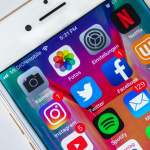More and more commonly in the age of social media, high budget movie productions are finding themselves increasingly at the mercy of Twitter. Back in March when Justice League was scheduled to premiere on HBO Max, an hour of footage was accidentally uploaded about a week early, soon followed by incredibly negative social media coverage about the film’s poor pacing and subpar special effects.
It was just one more drop in the bucket of bad news for the film’s production company, Warner Bros., which had already been plagued by behind the scenes accusations of racism, sexism, and overbearing studio interference.
More recently, the much anticipated cinematic adaptation of Lin-Manuel Miranda’s musical In The Heights caught heat after a tweet thread discussing possible racist undertones in the film went viral just after the film’s premiere.
An impromptu apology tour kicked off shortly after, with Miranda himself posting a promise to do better, for a production he was barely involved in. All it took was one, pretty innocuous, tweet to start a national conversation about the film, and the stink of “problematic”, bad buzz will probably never go away.
This begs the question. What can you do when your very public, very expensive project finds itself #canceled mid marketing campaign?
- Be Proactive. The longer you let a situation fester, the more time audiences will have to run wild with misinformation and speculations as to why you haven’t spoken up. It’s not always healthy to assume the worst, but when there’s money and reputations on the line, it’s in your best interest to have external communication protocols set up and a response to literally anything that might go wrong.
- Don’t Attempt a Cover-Up. It didn’t work for Nixon, it ain’t gonna work for you. Often, trying to conceal wrongdoing will just leave a worse taste in people’s mouths than whatever the original offense was.
- Apologize Twice. The first time with words, the second time with actions. In the interest of getting a quick response out, release a statement saying you’re deeply sorry, admitting fault, and a commitment to do better in the future. Then, once your team has surveyed the situation with more time, come out with a plan for how you’re going to handle the situation you’ve found yourself in. This will give you the time to respond more carefully and thoughtfully. And preferably not through social media.
- Be empathetic. The word of the year is “empathy”; audiences want to see a brand acting human, and there’s no better time to do that than when your brand is in the middle of catching major heat. BP did this successfully after the Deepwater Horizon disaster of 2010. While their approach wasn’t perfect, no one could say they didn’t respond as humanly as a multi-billion dollar company can. Compare this response to the Challenger Explosion where NASA officials went on a lengthy and public blame game rather than admitting fault and offering condolences.
- If possible, avoid conflict. There can’t be any bad press if you remove the source of conflict, right? In June of 2020, Disney announced it would be remodelling one of its more famous attractions, Splash Mountain. Now, the ride in and of itself contains no objectionable material, but its basis—the 1946 film “Song of the South”—is regarded as a massive, racist stain on Disney’s history. The House of Mouse has been silent about “Song of the South” for a long time, refusing to even reissue it digitally (and this is Disney we’re talking about). Seeing the beginnings of a “conversation” stirring up on Twitter, the parks decided preemptively to announce their makeover of the ride, as well as the removal of the film’s most famous song, “Zip-a-Dee-Doo-Dah”, from the parks.
Have you ever run a campaign that came under fire? How many of these strategies did you use to get yourself out of hot water?










